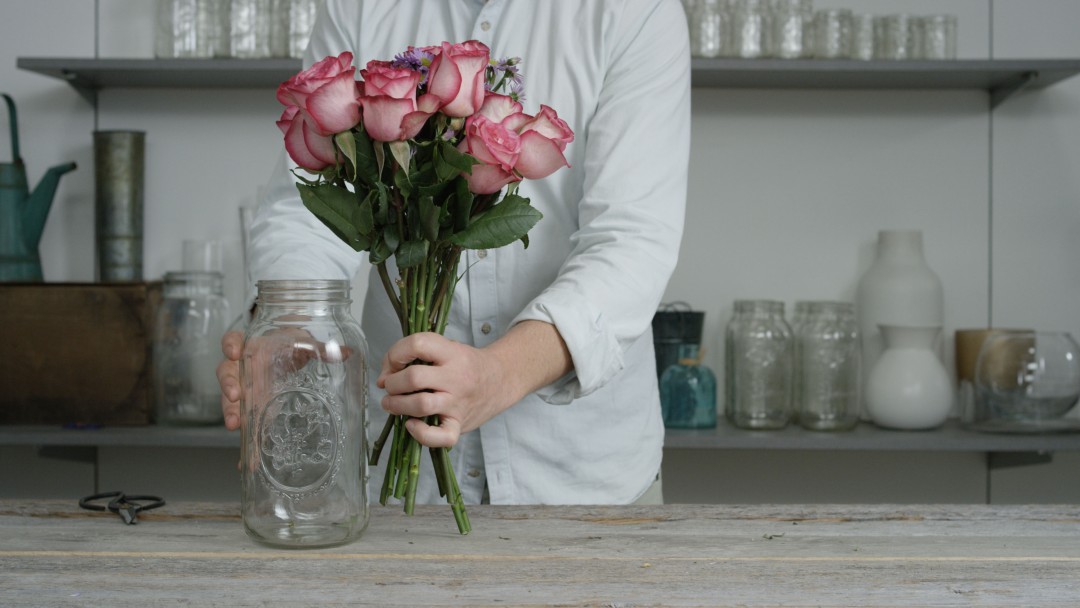Flower arranging is an art form that can transform a simple bouquet into a stunning centerpiece. With the right techniques and a bit of practice, anyone can arrange flowers like a professional florist. In this step-by-step guide, we’ll walk you through the process of creating beautiful floral arrangements that will impress your friends and family.
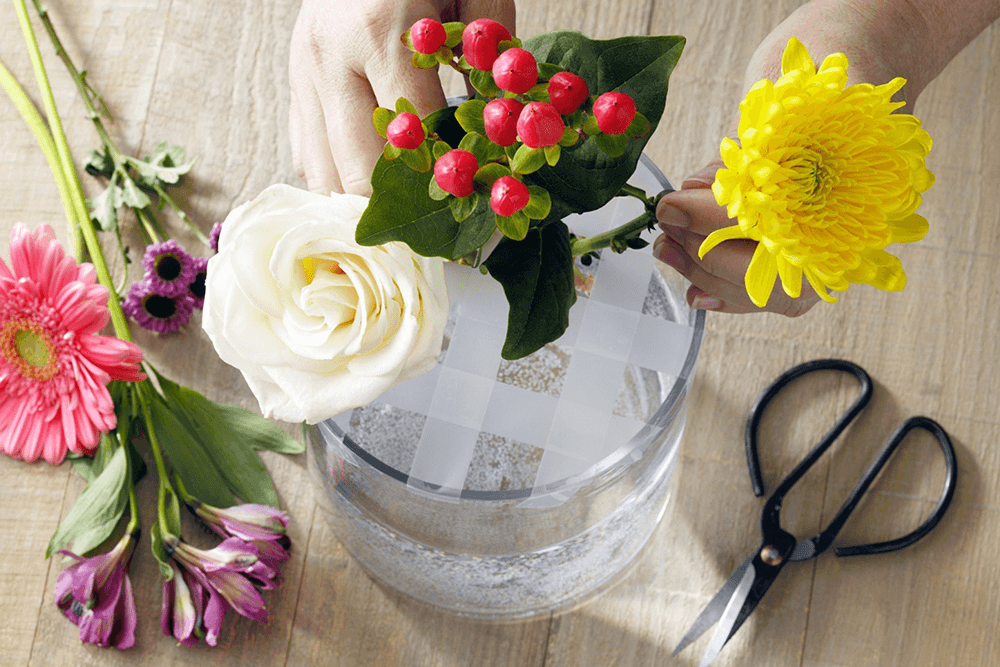
Gathering Your Materials: What You’ll Need
Before you begin arranging your flowers, gather all the necessary materials to ensure a smooth and enjoyable process. Here’s what you’ll need:
- Fresh Flowers: Choose a variety of fresh flowers in different colors, shapes, and sizes. Consider seasonal blooms for a vibrant and natural look.
- Vase: Select a vase that complements the style and size of your flowers. Clear glass vases are versatile and allow you to see the stems for better placement.
- Floral Foam or Frog: Floral foam or a frog (a metal or plastic grid) helps support and stabilize the flowers in the vase. Ensure that the foam or frog fits snugly inside the vase.
- Pruning Shears: Sharp pruning shears or scissors are essential for cutting stems and trimming foliage. Make clean, angled cuts to ensure optimal water absorption.
- Water: Fill the vase with fresh, clean water to keep your flowers hydrated and looking their best.
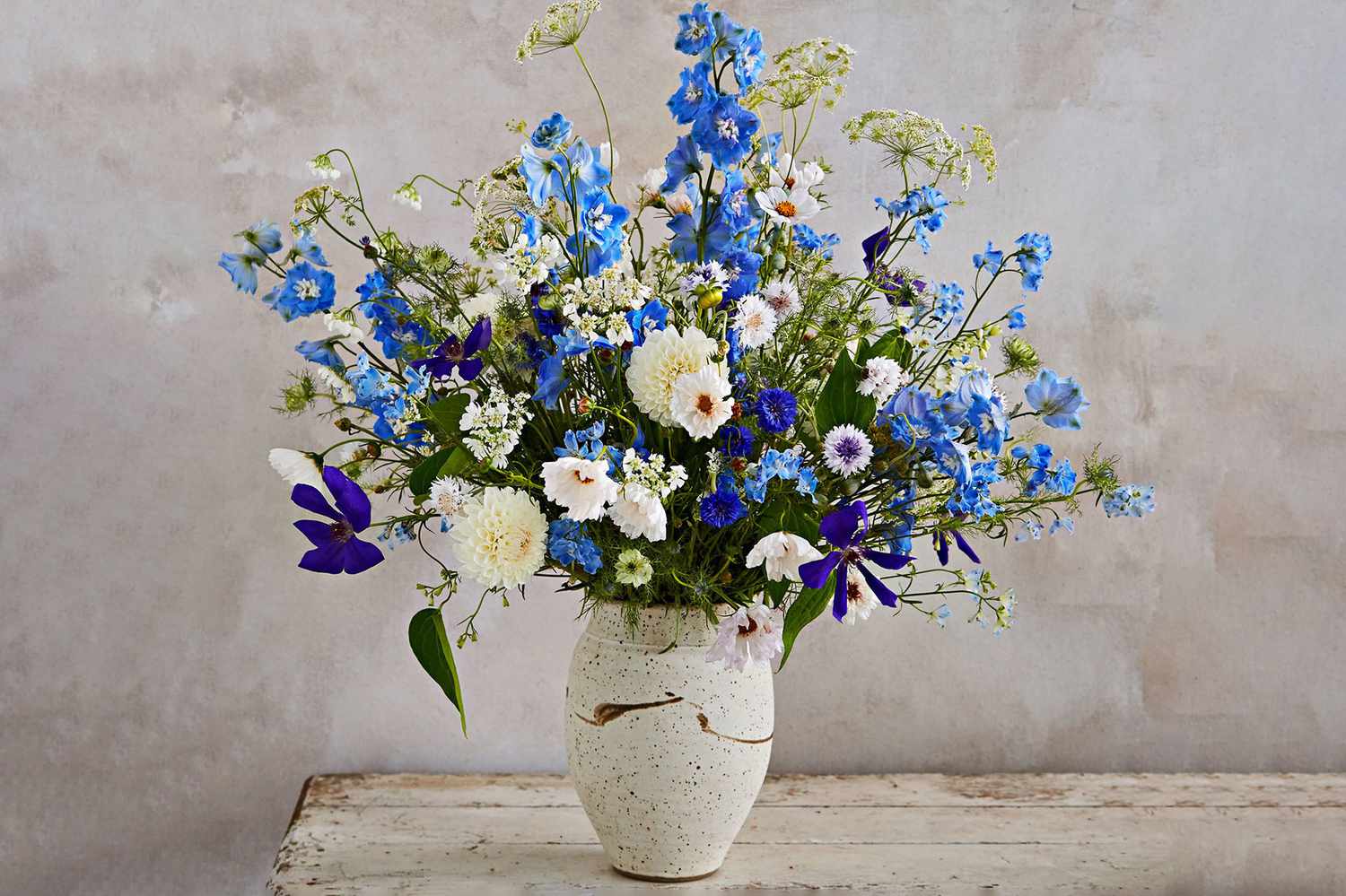
Choosing the Right Flowers: Tips for Selection
When choosing flowers for your arrangement, consider factors such as color, texture, and shape to create a visually appealing composition. Here are some tips for selecting the right flowers:
- Color Palette: Choose flowers in complementary or contrasting colors to create depth and interest in your arrangement. Consider the overall color scheme of the room where the arrangement will be displayed.
- Variety of Shapes: Select flowers with a variety of shapes and sizes to add dimension and visual interest to your arrangement. Mix large focal flowers with smaller filler flowers and delicate greenery for balance.
- Seasonal Blooms: Embrace seasonal blooms for a fresh and natural look. Seasonal flowers are often more readily available and affordable, and they add a touch of seasonal charm to your arrangement.
- Consider Stem Length: Pay attention to the length of the flower stems and choose varieties that fit the height of your vase. Trim stems as needed to achieve the desired height and proportion.
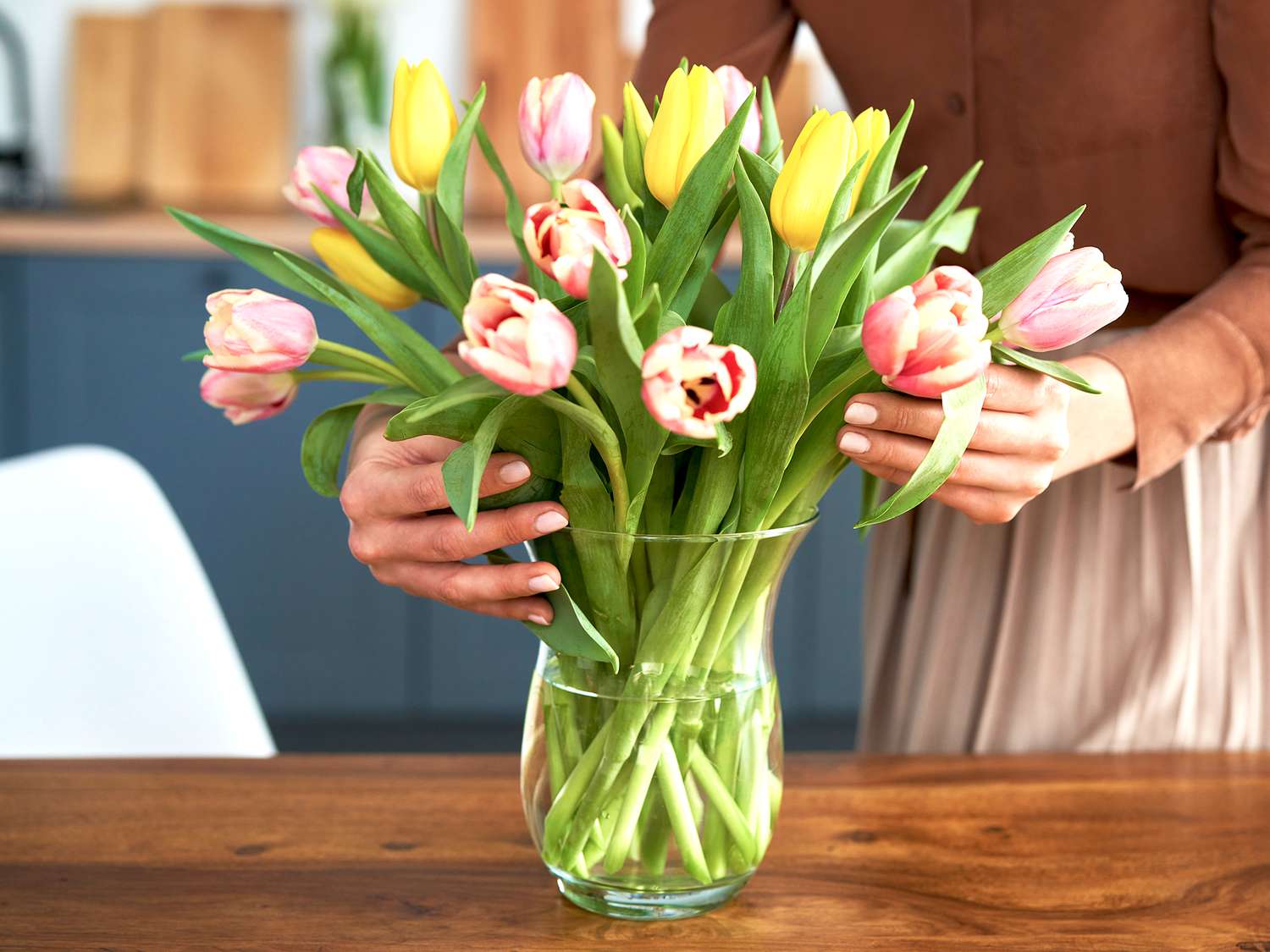
Preparing Your Flowers: Tips for Conditioning
Properly preparing your flowers before arranging them will help prolong their freshness and ensure a beautiful finished product. Follow these steps for conditioning your flowers:
- Trimming Stems: Using sharp pruning shears, trim the stems of your flowers at a 45-degree angle. This allows for better water absorption and prevents the stems from sitting flat at the bottom of the vase.
- Removing Foliage: Strip any foliage that will fall below the waterline in the vase to prevent bacterial growth and keep the water clean. Leave a few leaves at the top of each stem for a natural look.
- Hydrating Flowers: Place your trimmed flowers in a bucket of clean water and allow them to hydrate for at least an hour before arranging them. This helps revive wilted blooms and ensures they stay fresh longer.
- Conditioning Solution: Consider adding a floral conditioning solution to the water to prolong the life of your flowers and keep them looking vibrant. Follow the instructions on the packaging for best results.
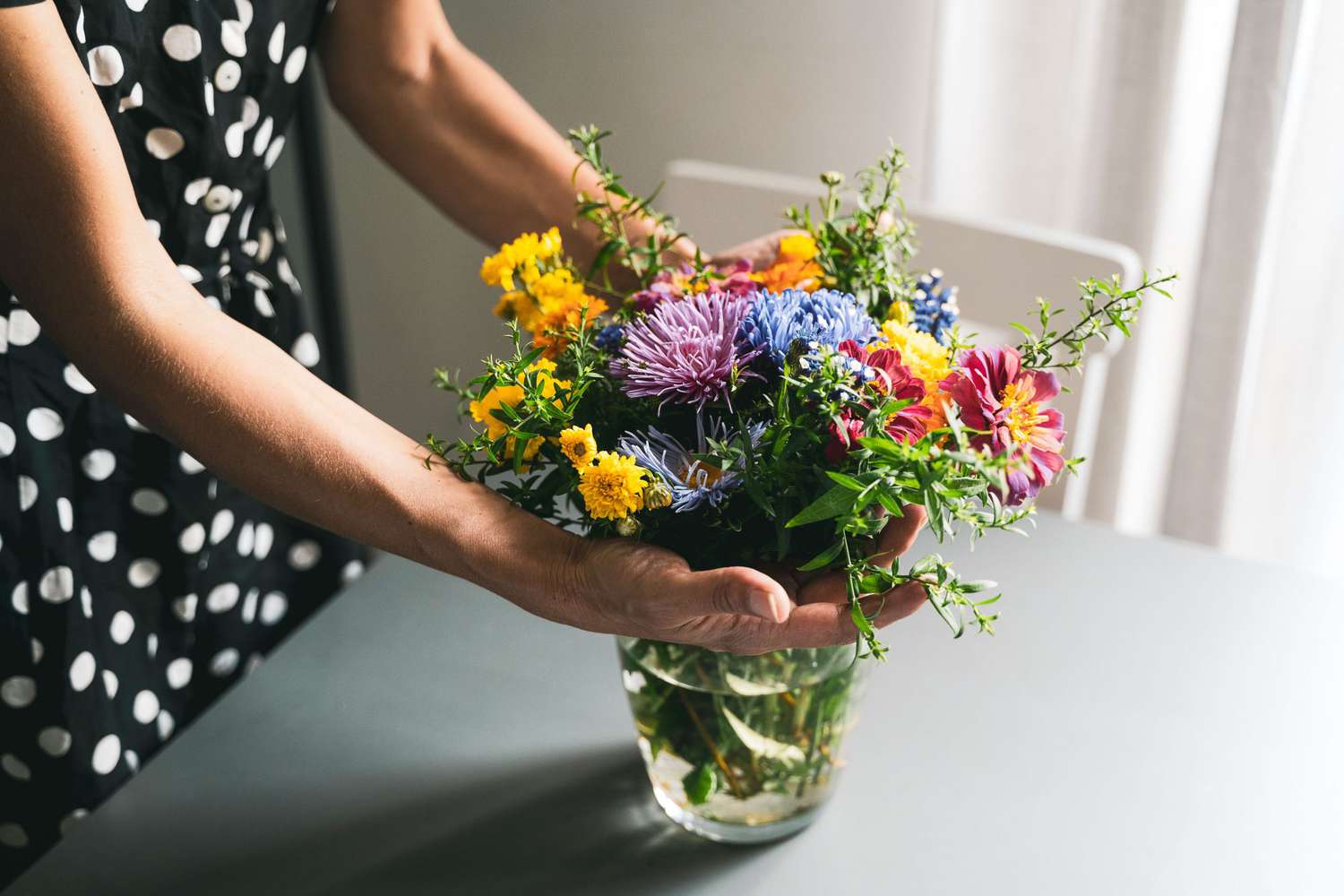
Arranging Your Flowers: Step-by-Step Instructions
Now that you’ve gathered your materials and prepared your flowers, it’s time to start arranging them in the vase. Follow these step-by-step instructions for creating a beautiful floral centerpiece:
- Prepare the Vase: Fill the vase with water and add floral foam or a frog to support the stems. Position the foam or frog securely in the center of the vase.
- Start with Focal Flowers: Begin by selecting one or two large, focal flowers to serve as the centerpiece of your arrangement. Place them in the center of the vase and adjust their height as needed.
- Add Secondary Flowers: Surround the focal flowers with smaller secondary flowers to fill out the arrangement and add volume. Place them evenly around the focal flowers, varying the heights for visual interest.
- Incorporate Filler Flowers: Fill in any gaps or empty spaces with filler flowers such as baby’s breath, wax flower, or ferns. These delicate blooms add texture and softness to the arrangement.
- Create Balance: Step back and assess the arrangement from different angles to ensure balance and symmetry. Adjust the placement of flowers as needed to achieve the desired shape and proportions.
- Add Greenery: Finally, add greenery such as eucalyptus, ivy, or fern fronds to frame the arrangement and provide a natural backdrop for the flowers. Tuck the greenery into the vase, focusing on the outer edges and bottom of the arrangement.
- Finishing Touches: Once you’re satisfied with the arrangement, trim any stray stems and adjust the overall shape as needed. Check the water level in the vase and top up as necessary to keep the flowers hydrated.
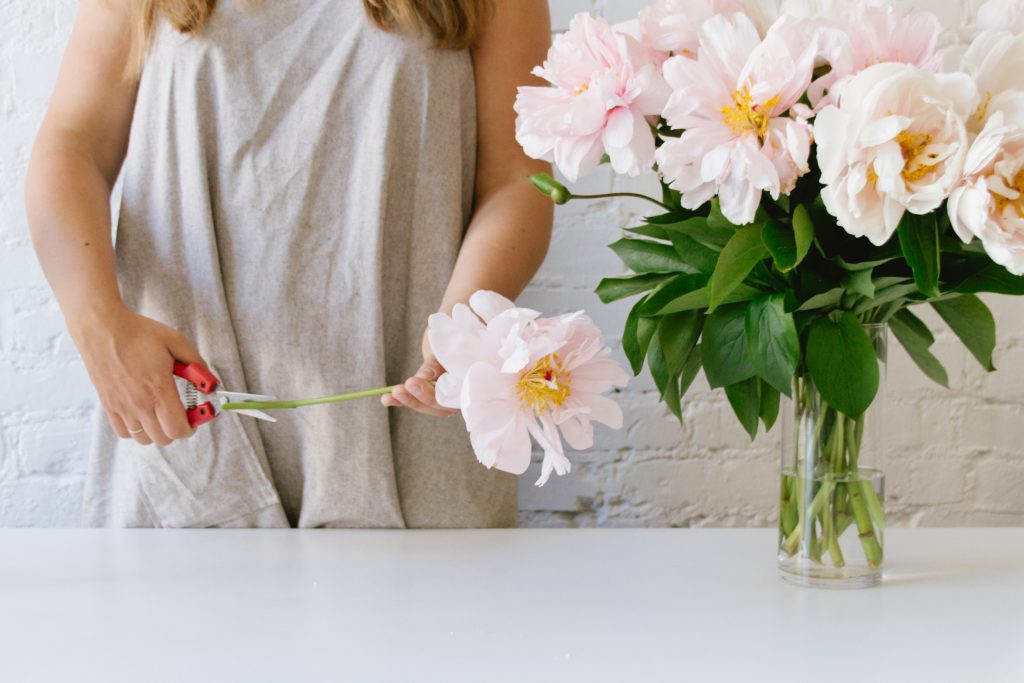
Displaying and Caring for Your Arrangement: Maintenance Tips
Now that your floral arrangement is complete, it’s important to properly care for it to ensure longevity and freshness. Follow these tips for displaying and maintaining your arrangement:
- Placement: Choose a location for your arrangement that is away from direct sunlight, heat sources, and drafts, as these can cause flowers to wilt prematurely.
- Watering: Check the water level in the vase regularly and top up as needed to keep the stems hydrated. Change the water every few days to prevent bacterial growth and ensure freshness.
- Trimming Stems: Trim the stems of your flowers every few days to remove any wilted or damaged foliage and promote water absorption. Re-cut the stems at a 45-degree angle before placing them back in the vase.
- Avoiding Ethylene Exposure: Keep your arrangement away from fruits, vegetables, and other ethylene-producing items, as ethylene can accelerate the aging process of flowers and cause them to wilt faster.
Conclusion: Mastering the Art of Flower Arranging
In conclusion, arranging flowers in a vase like a pro is a rewarding and enjoyable skill that anyone can master with practice and patience. By following the step-by-step guide outlined above and experimenting with different flowers, colors, and textures, you can create stunning floral arrangements that add beauty and elegance to any space. So gather your materials, unleash your creativity, and start arranging flowers like a professional florist today!





